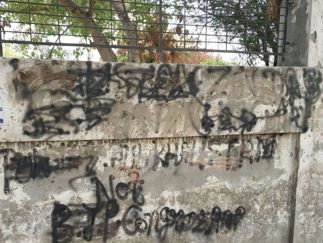
Weasel coffee is one of the most expensive beans around — it's rare, and its flavor is so extraordinary its bizarre source rarely deters people from drinking it.
Weasel coffee is a unique style of coffee found only in Southeast Asia. Farmers allow a species of civet, called the kopi luwak (which looks like a weasel, but is unrelated) to feed off the coffee bushes.
The seeds are then collected from their droppings before being cleaned and roasted.
The thought process behind this strange harvesting practice is that these animals use their highly refined sense of smell to choose the ripest, highest-quality beans.
Find out how weasel coffee was discovered, how it’s processed today, and why it’s one of the world’s most sought-after and expensive coffees.
The History of Weasel Coffee
The story of weasel coffee traces back to colonial-era Vietnam, where it remains known as cáphêchồn. In the 19th century, settlers cultivated Coffea robusta while prohibiting local villagers from sampling this lucrative cash crop.
This rule meant nothing to local wildlife, though.
At the heart of weasel coffee production lies the Asian palm civet, a native to the jungles of Southeast Asia. The wild civet holds a keen fondness for ripe coffee cherries and is quite particular about their quality — an aspect that plays into the coffee’s flavor. They consume the cherries whole and later excrete the indigestible beans in their droppings.
And it was here that crafty locals saw an opportunity. As they say, necessity is the mother of invention.
After (thoroughly) washing and further processing these discarded beans, they discovered the resulting brew had an exquisitely mellow flavor better than their standard coffee. Word of this discovery spread, and soon, an entire specialty was born from nature's unlikely collaboration.
How Is Weasel Coffee Cultivated?
The process of getting weasel coffee from the forest floor to your local cafe is almost entirely natural.
Weasel coffee cultivation involves the following steps:
- As mentioned, it all starts with civets. They roam the forests and coffee plantations, eating coffee cherries. Their discerning tastebuds make them nature's quality controllers, as they only eat the very best fruits.
- Inside the civet stomach, acids and enzymes pass through the coffee cherry's pectin layer. This partially breaks down proteins and creates sugars, giving weasel coffee its distinct flavor.
- Eventually, the civets excrete the cherries. Farmers collect the excretions and painstakingly pick out the partially digested beans. Fortunately, their years of experience allow them to make short work of this step.
- The beans are washed thoroughly under powerful streams of water to remove any remaining matter.
- The coffee beans are spread out in the sun to reduce their moisture content. This is done until the beans reach the desired level, typically between 10%-12%.
- Artisanal roasting draws out the unique characteristics. Some coffee producers use moist-heated techniques to avoid accidentally scorching the delicate molecules.
What Does Weasel Coffee Taste Like?
Weasel coffee packs a complex flavor that’s different from any other brew. On the nose, you'll pick up caramelized sugar and toasted nuts with the slightest floral undertones.
Taking your first sip, a luxurious body with a velvety feel coats the tongue in notes of bittersweet chocolate, salted caramel, and roasted berries. People often describe it as chocolatey and say it almost tastes like hot cocoa.
All the while, any bitter elements you'd expect are mysteriously absent. To experience this for yourself, we recommend the phin filter, which allows those delicate flavors to truly shine.
The Best Way to Make Weasel Coffee
Due to the cost, brewing a cup of this special coffee can be intimidating. However, you'll have to if you want to enjoy it.
Fortunately, weasel coffee is quick and easy to make using a phin filter.
First, rinse your phin with hot water to warm it. Then, add finely ground beansand just enough hot water to allow the grounds to bloom.
Top with water just below a boil and allow the grounds to steep. You'll need to wait about five times to get a full cup of coffee, but it's well worth it.
Once fully extracted, give it a stir, and float a bit of cream on top if you like. However, most people suggest drinking weasel coffee black, so you can fully enjoy the flavor.
Sit back, breathe deep, and enjoy nature's most interesting collaboration unfolding on your tastebuds. You may just find a new obsession – or at least a nice change of pace for your caffeine adventures.
How Much Does Weasel Coffee Cost?
The price for weasel coffee varies quite a bit, depending on how it’s sourced and the overall quality.
Wild-sourced is more expensive because it’s labor-intensive. Other coffees are made with weasels that are force-fed in an enclosure, which produces more coffee beans with less effort, but the quality isn’t as good, and this method raises ethical issues.
Prices range from $33 for 8 oz (225 g) to $114 for 3.5 oz (100 g).
Weasel coffee “analogs” are also available. These beans are made with enzymes similar to what’s in the weasel’s stomach, allowing them to be broken down without being digested and excreted. Prices for these are about $35 for 8 oz (225 g).
For comparison, our BanMe peaberry robusta beans are $21 for 12 oz (340 g).
Weasel Coffee & Sustainable Farming
While weasel coffee's origins make for a great story, some question its impact. High demand means problems with supply. The beans are much harder to come by, making them rare and expensive. This opens the door to potentially unethical practices.
Understandably, aspects like civet welfare in large plantations raise ethical questions. Then there's the environmental side — are certain farming practices sustainable long-term?
Fortunately, there are some workable solutions. Many producers now focus on small-batch, eco-minded growing. Civets roam free on organic land, so their natural habits aren't disrupted, and strict controls ensure good living standards.
Alternatively, "fake weasel" coffees extract flavor artificially without real civets. The process mimics nature's magic, using ingredients emulating their stomach acids. The results taste nearly identical.
For those still yearning to try the real deal, look for certified sustainable brands that overhaul old ways, saving forests as well as coffee and civet livelihoods.
Through understanding consumer interests, the industry works daily to overcome past issues. With cooperation across borders, we're ensuring this unique coffee and its players can coexist harmoniously for years to come.
FAQs: Weasel Coffee
We know the more you learn about coffee, the more questions you have. Here are answers to some of the most common questions we hear.
1. What makes weasel coffee (Kopi Luwak) so unique compared to other coffee types?
Weasel coffee, or Kopi Luwak, is unique because it involves a natural process where civets consume coffee cherries. The beans are then collected from their excretions, cleaned, and roasted. This process, believed to enhance the coffee's flavor by the civet's digestive enzymes, results in a rare and distinctive taste profile.
2. Why is weasel coffee considered one of the most expensive coffees in the world?
Weasel coffee's high price is attributed to its rarity, labor-intensive collection process, and unique production method. The coffee's exceptional flavor profile, combined with ethical and sustainability concerns related to civet treatment and habitat, also contributes to its premium price.
3. How is weasel coffee ethically & sustainably produced, given the concerns surrounding civet welfare?
Ethical and sustainable production of weasel coffee involves practices like allowing civets to roam free in their natural habitat, adhering to strict welfare standards, and employing small-batch, eco-minded farming. Some producers use "fake weasel" coffee, mimicking the process artificially to avoid ethical issues.
4. How much caffeine is in a cup of weasel coffee?
Assuming the coffee is robusta, weasel coffee can have approximately 66-130 mg of caffeine per cup.
The caffeine content varies due to a number of factors, such as the amount of coffee used and the brewing method.
Phin filters, espresso machines, and moka pots brew concentrated drinks that are high in caffeine. Other methods have similar amounts of caffeine, but the serving is larger (2 ounces compared to 8).
5. Do other kinds of Vietnamese coffee have a unique flavor?
Whether you fancy a velvety-smooth Vietnamese coffee, like our Sai Gon OG blend, or the convenience of instant, like our Vietnamese Milk Coffee, many varieties with flavors go far beyond an ordinary cup of joe.
6. What kind of coffee is used in an authentic Vietnamese coffee drink?
Traditional Vietnamese coffee is made with a dark-roasted robusta bean, like our HaNoi coffee. Robusta coffee has more caffeine than arabica, offering a more distinct, earthy, and intense flavor. The sweetened condensed milk in Vietnamese coffee cuts through the strength and adds a layer of smooth richness.
Try an arabica and robusta blend if robusta coffee is too strong for you. The two work together nicely and create a well-balanced profile.
Disclaimer: This article is part of sponsored content programme. The Tribune is not responsible for the content including the data in the text and has no role in its selection.
Join Whatsapp Channel of The Tribune for latest updates.



























